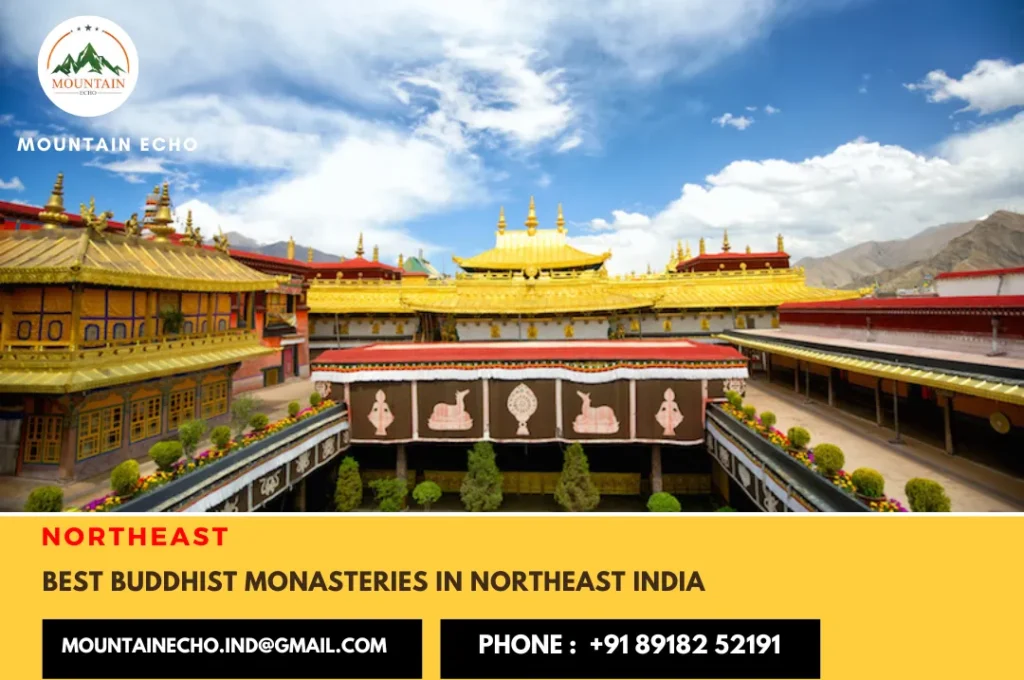10 best Buddhist Monasteries to visit in Northeast India
Buddhist monasteries in Northeast India are sacred and historical sanctuaries that hold a special significance in the spiritual and cultural landscape of the region. These monasteries complexes serve as living storehouse of Buddhist teachings and traditions.
With a rich heritage dating back centuries, these monasteries attract pilgrims and tourists alike, offering a glimpse into the timeless wisdom and architectural marvels that have endured through the ages. In this article, we will explore the fascinating Buddhist monasteries in Northeast India.
Tawang monastery, Arunachal Pradesh
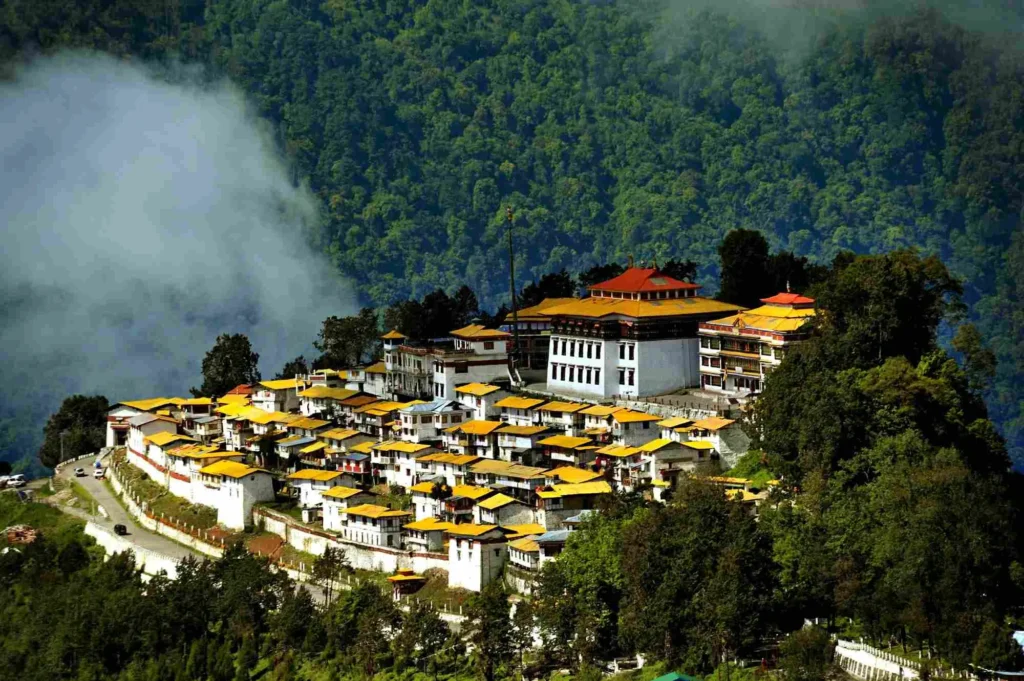
The magical Tawang monastery was built in 1681 inside a former Monpa royal palace. It is the second largest Buddhist monasteries in the world after the Drepung Monastery in Lhasa, Tibet. Tawang has over 400 lamas who live in buildings with yellow roofs surrounding the main ones. This monastery holds immense significance in Tibetan Buddhism and is a revered religious and cultural landmark in the region. It has a stunning prayer hall with an 8-meter-tall Buddha statue.
Rumtek monastery, Sikkim
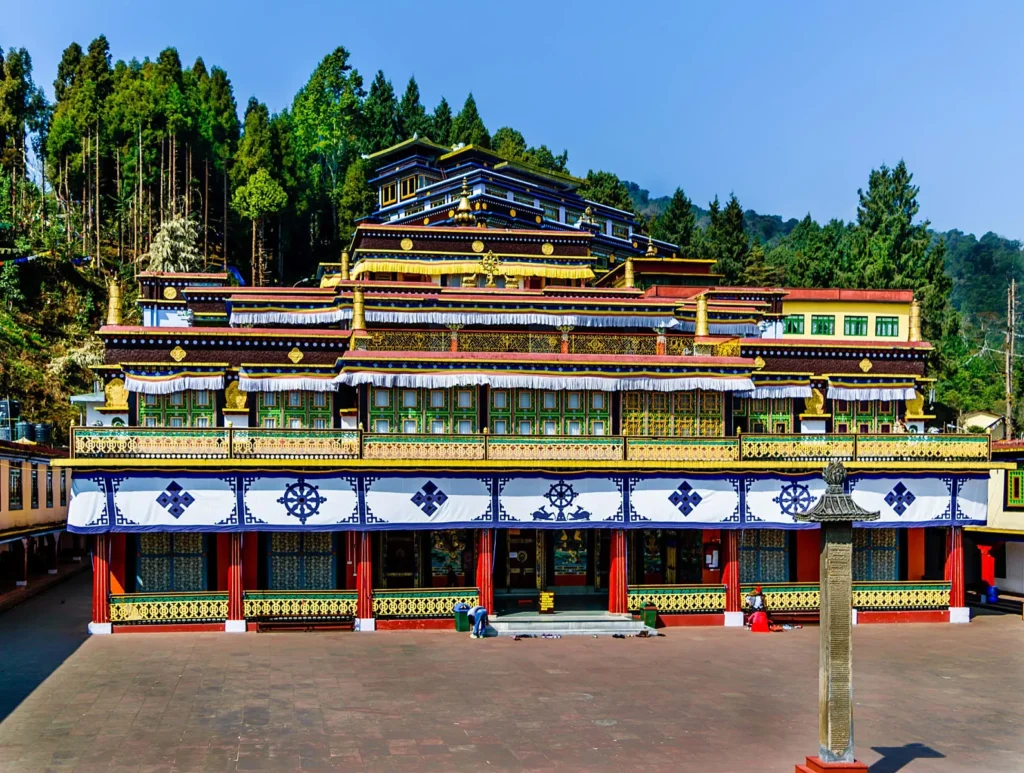
Rumtek Monastery is a sacred Tibetan Buddhist site renowned for its serene beauty and spiritual significance. It was founded in the 16th century and serves as the main seat of the Karma Kagyu school of Tibetan Buddhism outside Tibet. It is one of the oldest monasteries in the region. Inside, it houses precious religious artifacts, ancient manuscripts, and a golden stupa containing the relics of the 16th Karmapa. It is surrounded by lush greenery and panoramic mountain views and offers a serene atmosphere for meditation and pilgrimage.
Namphake Buddhist Monastery, Assam
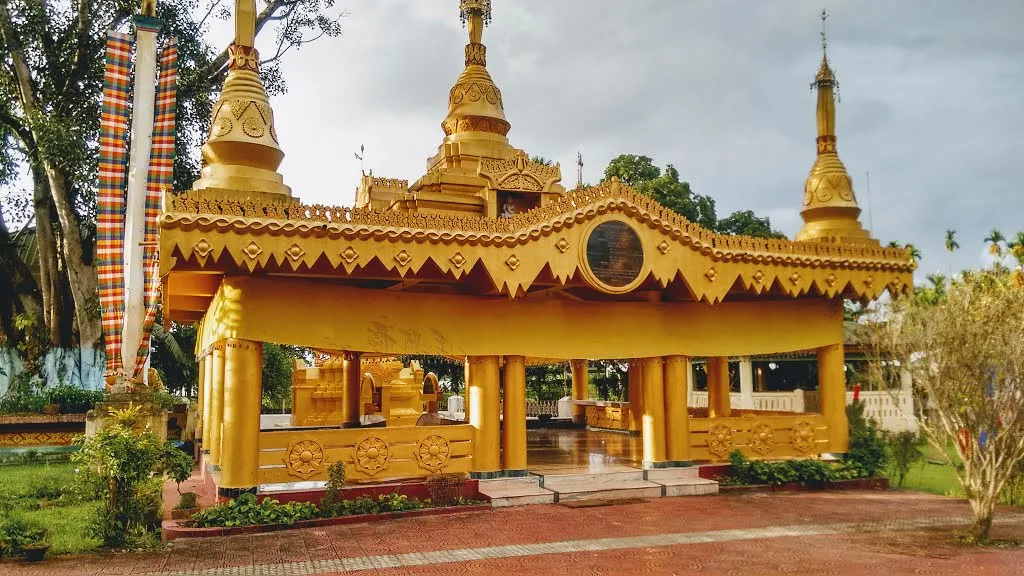
It was established in the year 1850 and is one of the most respected and oldest Buddhist monasteries in Assam. Situated near the town of Naharkatia, it is known for its unique blend of Theravada Buddhism and Tai-Ahom traditions. It serves as a spiritual haven for monks and pilgrims alike, offering meditation retreats and religious teachings. The beautiful temple complex make Namphake Buddhist Monastery a place of spiritual reflection and cultural appreciation in the northeastern region of India.
Pemayangtse Monastery, Sikkim

Pemayangtse Monastery is nestled against the breathtaking backdrop of India’s tallest peak, Mount Kanchenjunga. This ancient monastery was founded in the 17th century by Lhatsum Chenpo, and is one of the oldest in monasteries the region. It has been a cherished home for Bhutia monks for centuries. Notably, Pemayangtse Monastery plays a crucial role in managing the operations of various Tibetan Buddhist monasteries within the Nyingma tradition, serving as a center of authority for this spiritual community.
Golden pagoda, Arunachal Pradesh
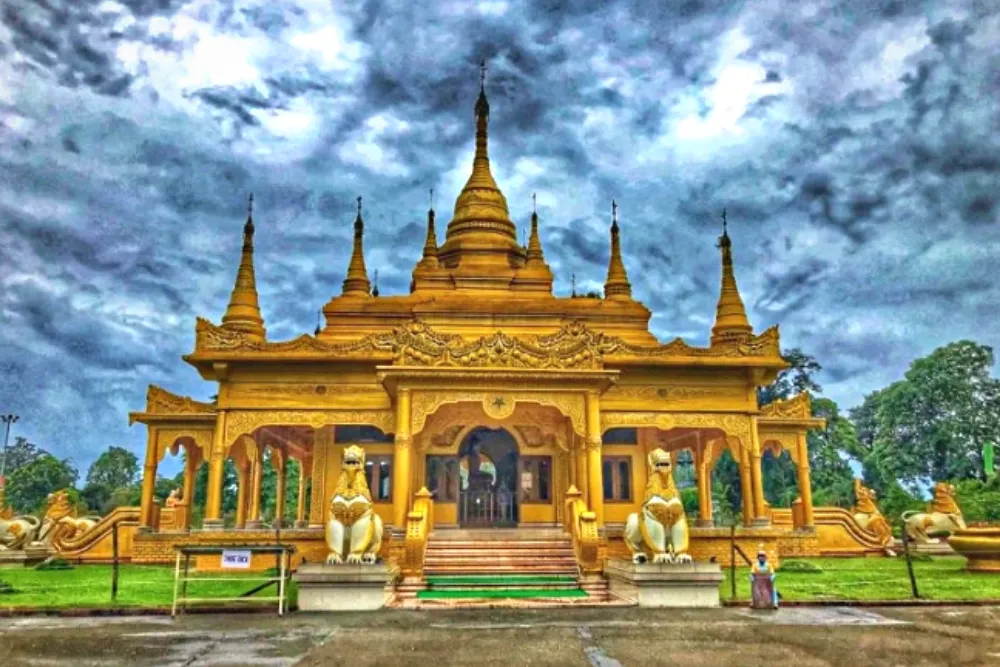
The Golden Pagoda, also called Kongmu Kham, is a beautiful Burmese-style Buddhist temple in Arunachal Pradesh, India. It is a mix of Burmese and Tibetan styles monasteries, which makes it unique. Inside the shrine hall, there is a bronze Buddha statue seated in a meditation pose. This statue was a generous gift from Ven Prakhu Pabhavana, the Chief Monk of Thailand’s Wat Aranjikavas temple. The main entrance to the shrine hall is on the north side, with the Lord Buddha statue also facing north. The primary entrance to the Golden Pagoda complex is oriented towards the east, symbolizing the direction where Lord Buddha achieved Enlightenment.
Enchey monastery, Sikkim
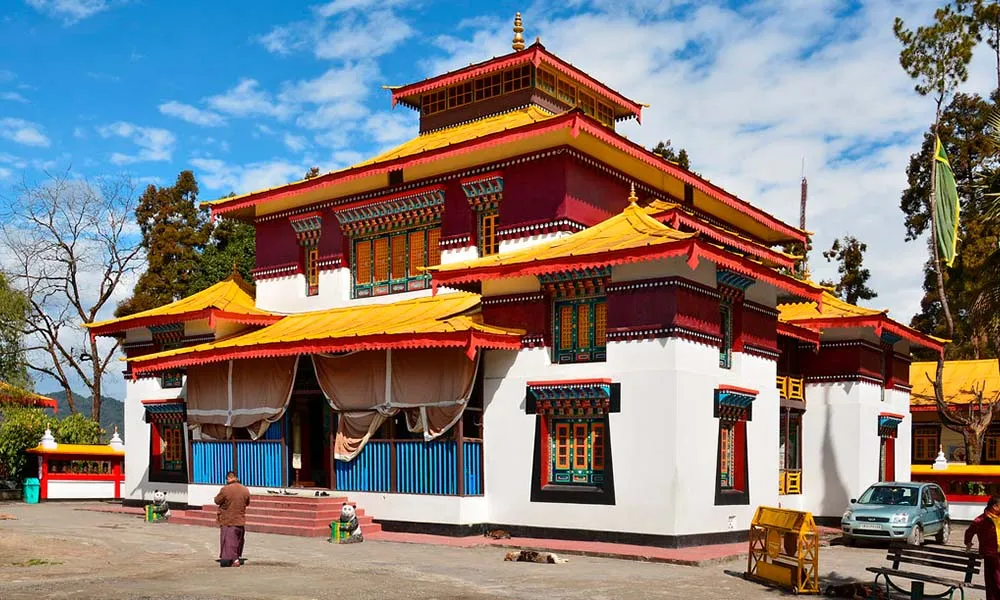
This ancient monastery is 200 years old and is located 3 kilometers to the northeast of Gangtok. It holds great significance as a center for the Nyingmapa order of Vajrayana Buddhism. It is believed that Lama Druptob Karpo, a renowned tantric with the ability to fly, constructed a hermitage in this location after flying from Maenam Hill. During the reign of Sidkeong Tulku, it was beautifully renovated in the Chinese pagoda style. Today, this sacred monastery is the residence of 90 monks and is devoted to the worship of Buddha, Loki Sharia, and Guru Padmasambhava.
Venuvan Vihara Buddhist Monastery, Tripura
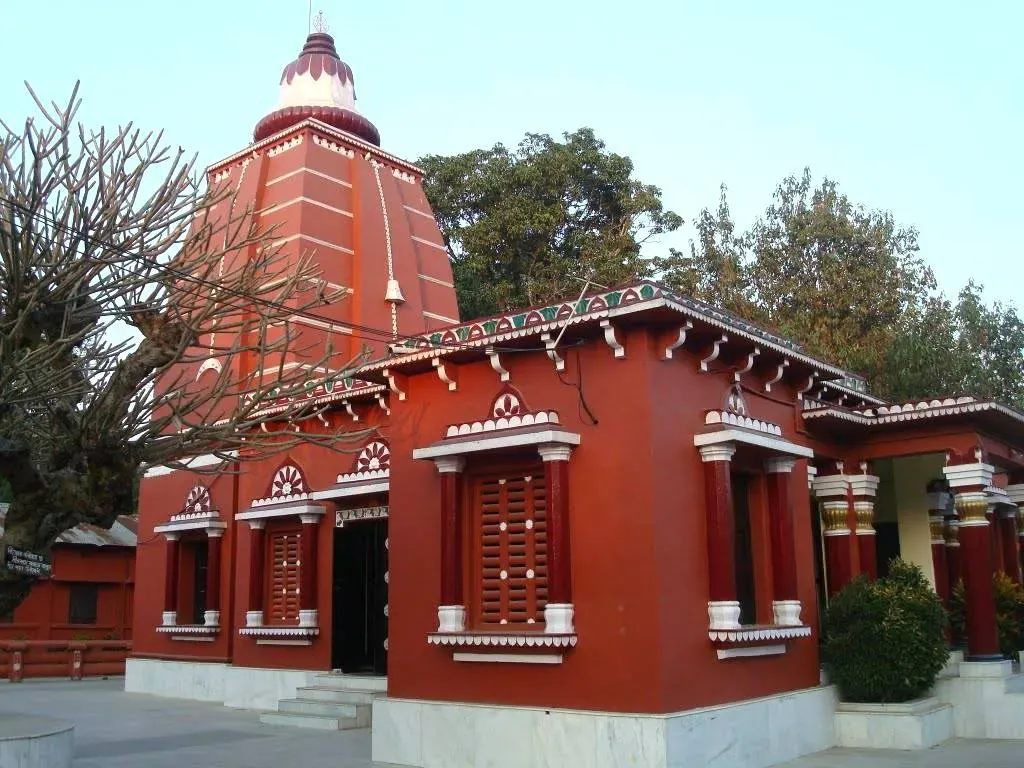
Venuban Buddha Vihar is a well-known Buddhist temple situated just 2 kilometers from the center of Agartala city. This temple is renowned for its unique Buddha statue, which is crafted entirely from metal. It is believed that this remarkable statue was originally made in Myanmar and later brought to its current location. Venuban Buddha Vihar hosts vibrant celebrations on Buddha Purnima, a special day that commemorates the birth, enlightenment, and passing of Lord Buddha.
Cheoling monastery, Shillong

It is the oldest of all the monasteries in Meghalaya Founded in the 1960s by Tibetan families escaping China’s military crackdown in 1959. The Monastery is managed by the Gelukpa Cultural Society and serves approximately 160 Tibetan families in Shillong. According to Pema Dhondup, the Tibetan Settlement Officer, during the 1959 Tibetan uprising, the 14th Dalai Lama had to flee from Lhasa, with around 80,000 Tibetans joining him on a journey to India through the Himalayas. Some have settled in the northeastern states of Arunachal Pradesh and other parts of India, and a small number found homes in Meghalaya.
Samdruptse Monastery, Sikkim
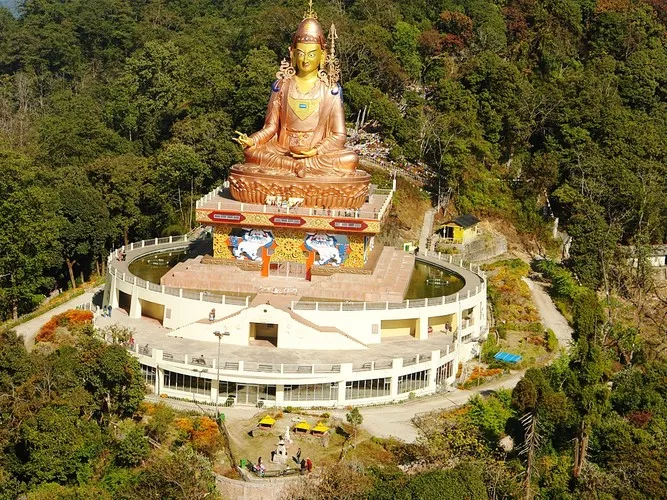
Samdruptse Monastery is a prominent Buddhist pilgrimage site and a stunning cultural landmark. It was built in the 20th century. Its name Samdruptse means The Wish Fulfilling Hill in the local language. The monastery is renowned for the statue of Guru Padmasambhava, which is 45 metres tall and is coated with gold. This sacred site offers breathtaking panoramic views of the surrounding Himalayan mountains and lush greenery.
Bomdila Monastery, Arunachal Pradesh

The Bomdila Monastery is renowned for its rich Buddhist heritage. Established in 1965 by the 12th reincarnation of Tsona Gontse Rinpoche, this monastery is a hub for Buddhist Lamas and monks. It follows the Mahayana Buddhism tradition and is also referred to as the Gentse Gaden Rabgyel Lling monastery. Interestingly, it is designed as a replica of the Tsona Gontse monastery in Tibet. Later, the 13th reincarnates of Tsona Gontse Rinpoche added a prayer hall to the monastery.
